How Often You Should Water Your Indoor Plants
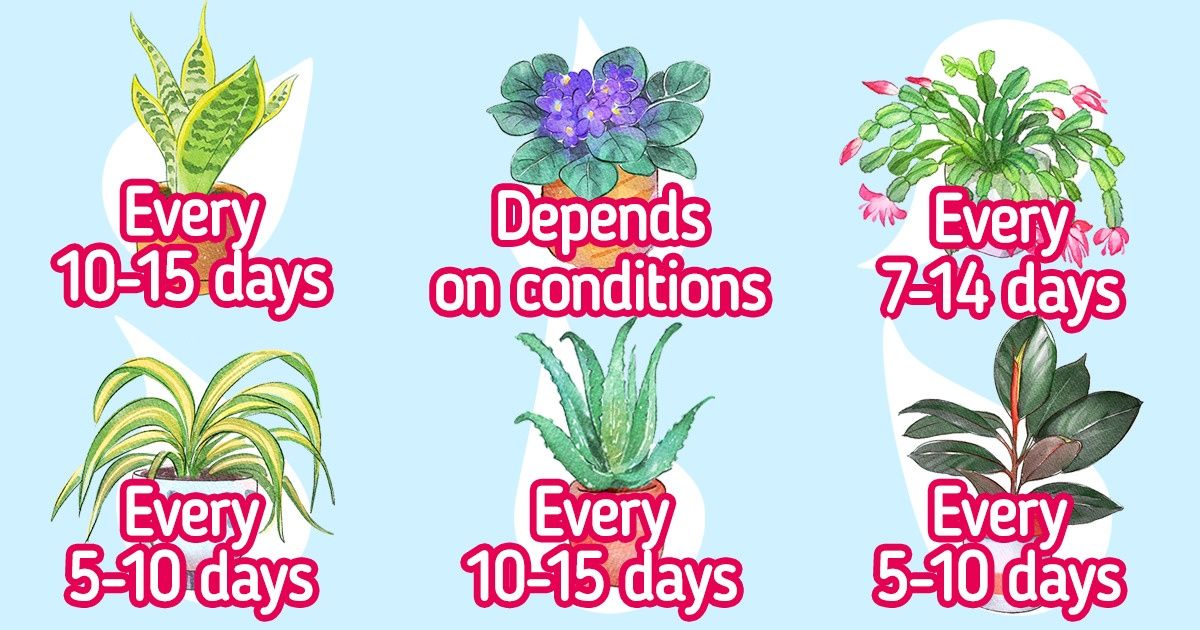
Taking proper care of your indoor plants can be tricky. If you water them incorrectly or choose the wrong pot and location, they can easily perish.
At 5-Minute Crafts, we’ve prepared a guide for you on how to water the most common indoor plants.
Symptoms showing that you water your plants too often
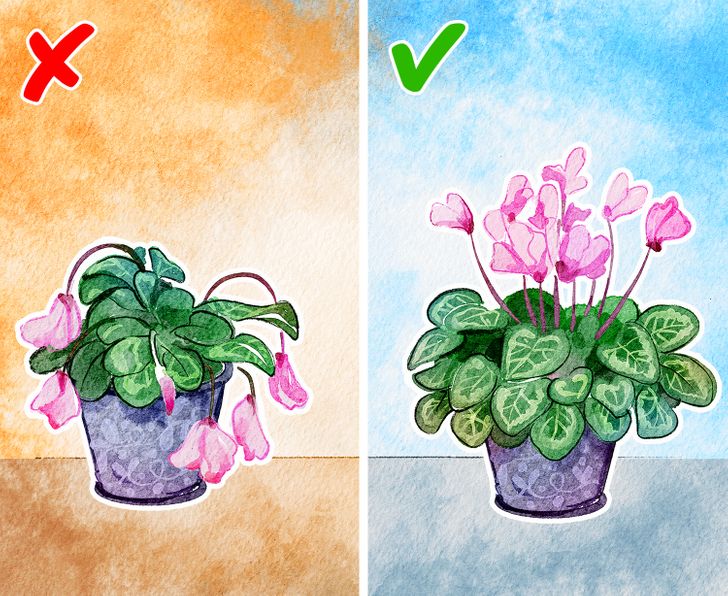
The plant turned yellow and began to wilt. The same symptoms can be caused by the opposite reason — too little watering. To understand the difference, touch the soil — if it’s too damp, you should avoid frequent watering.
You are using a pot without drainage holes. This can cause the plant to literally drown in the water.
The soil smells bad. Due to the increased humidity, the number of fungi and bacteria in the soil increases, which can cause an unpleasant odor, especially when the roots of the plant begin to rot.
Tiny flies can be seen in the soil. They start flying every time you water the plant. This is also one of the signals that you are watering them too frequently.
- Tip: Cacti and succulents like their leaves and stems to remain dry at all times. Try adding a layer of grit on top of the compost if repotting.
Things to know before watering
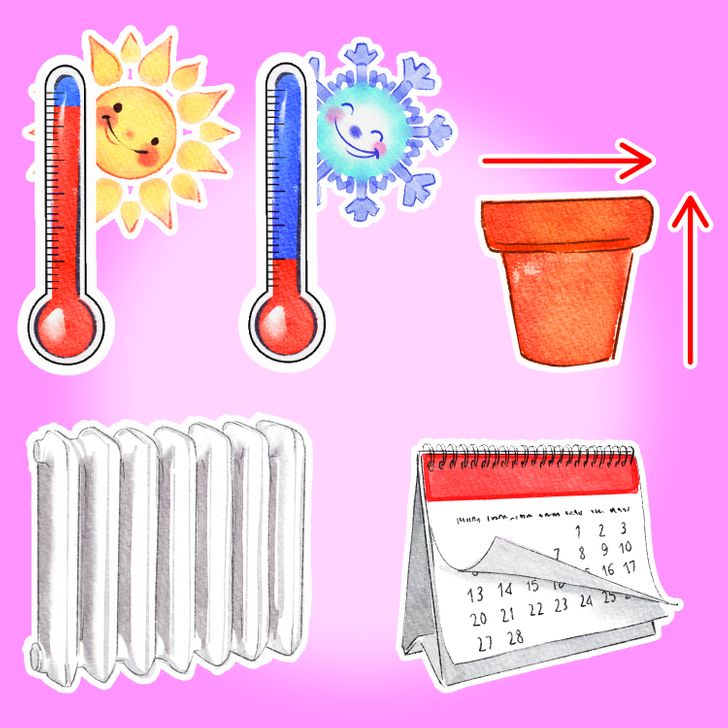
- Find out and follow the correct watering method for your plant. Philodendrons, for example, grow in the tropics, where it rains regularly, so they need more water.
- Use water that is room temperature. You can put water in a watering can and leave it there until the next watering.
- Take the season into account. In winter, when plant growth slows down and temperatures are lower, it’s better to water plants a little less often.
- Remove excess water from the dish that the flower pot sits on.
- Avoid getting water on succulent and cacti leaves.
- If your plant doesn’t tolerate tap water well, try to use filtered water or rainwater.
- Water the soil all over the pot, not just in one place. The roots run all around the base of the plant.
- The more light your plant gets, the more frequent watering should be. And vice versa.
- Take the size and material of the pot into account. The smaller it is, the more frequently you need to water the plant. Terra cotta and unglazed pots are porous — this means air can access the roots. Plants in a pot like this need to be watered a little more often than in a plastic, ceramic, or polymer pot.
- Take the temperature, humidity, and heating conditions in your house into account. The higher the temperature, the faster your plants can dry out. The higher the humidity, the slower the soil dries. If the plant is near a radiator or an air conditioner, the soil will get dry faster.
What watering method to choose
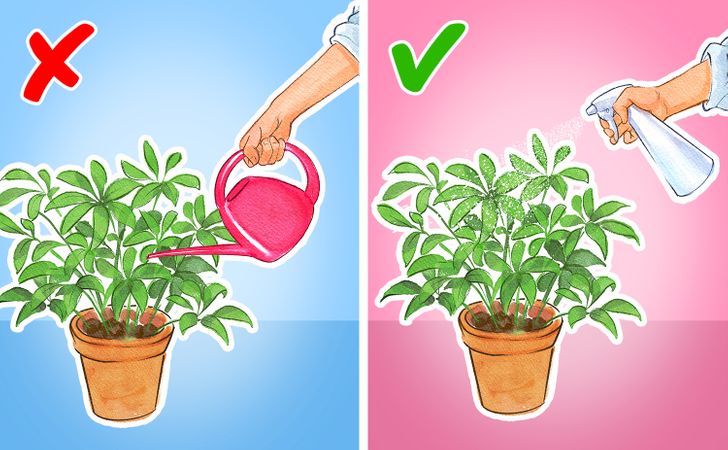
There are many methods you can use to water plants, for example:
- Watering from above. You should pour water all over the plant, including the leaves. This method is suitable for tropical plants and ferns. If you are using this type of watering, make sure the water gets to the soil.
- Watering from below. If you want to use this method, place the plant pot with drainage holes in a pan of water. Its level should be about 1 inch high. Wait 20 minutes and remove the water. This method works well for African violets.
- Misting leaves and aerial roots.
- Watering bromeliads. These plants have a natural cup formed by their leaves. Pour rainwater or distilled water into it, and keep the soil moist.
The most common indoor plants and the frequency they need to be watered
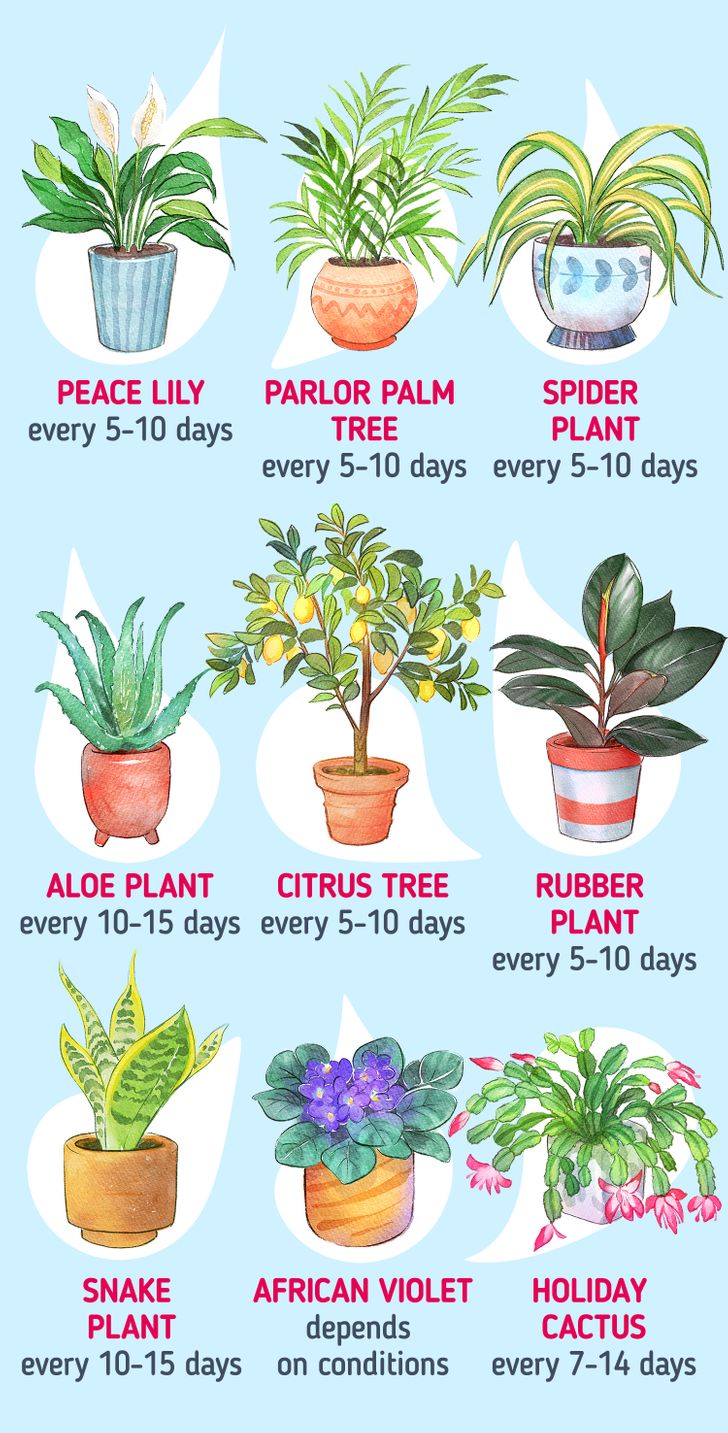
- Peace lily — every 5-10 days
- Parlor palm tree — every 5-10 days
- Spider plant — every 5-10 days
- Aloe plant — every 10-15 days
- Citrus tree — every 5-10 days
- Rubber plant — every 5-10 days
- Snake plant — every 10-15 days
- African violet — depending on conditions
- Holiday cactus — every 7-14 days